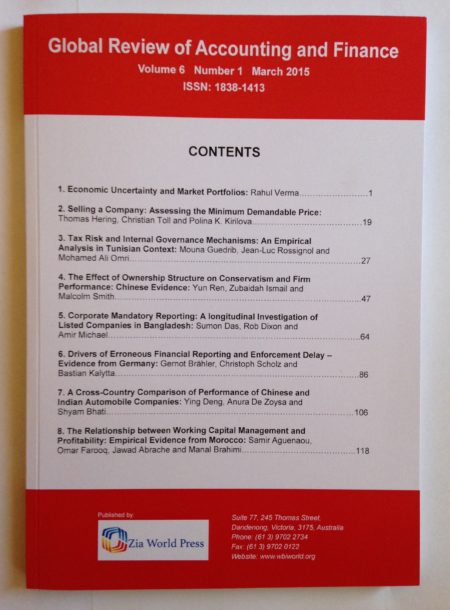Global Review of Accounting and Finance
Vol. 10. No. 1., March 2019, Pages: 29 – 46
Comparison Study on Asset Pricing Model in Chinese Stock Market: CAPM and Fama-French Model
Tianshu Liu and Jae-Seung Baek
Harry Markowitz (1959) develops a mean-variance model for efficient portfolio management. Based on this model, Sharpe (1964), Lintner (1965) and Black (1972) build the CAPM. Merton (1973) then generalizes the CAPM and proposes the ICAPM. Afterwards, Fama and French (1996) take the idea of Ross’s (1976) arbitrage pricing theory and construct a three-factor model. The Fama-French three-factor model explains covariation in average returns around the capital market in the world. However, empirical findings are not in favour of the use of the CAPM that may arise from the features of Chinese capital market which are state-owned system and non-capitalization. The purpose of this research is to explore the explanatory power of asset pricing models in regards to investor behaviour in Chinese stock market. The findings of this study are that the Fama-French three-factor model better explains time-series variation in stock returns than the CAPM. Size effect exists in Shanghai and China (Shanghai and Shenzhen) stock market. However, value effect is found only in Shanghai stock market. Empirical results also show that, in Shanghai stock market, firms with low E/P ratios tend to have higher returns and firms with higher E/P ratios tend to have lower returns. Robustness tests show that the Fama-French three-factor model is better than CAPM to explain stock return variation in Chinese stock market.
DOI :
https://doi.org/10.21102/graf.2019.03.101.02

